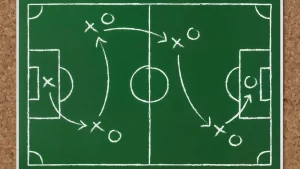Proven Steps to Bring Your Sibling to the U.S. Quickly and Easily

A Comprehensive Guide to Bringing Your Sibling to the United States
Bringing your sibling to the United States is a noble and heartfelt procedure that can provide them with new opportunities and a better quality of life. As an American citizen, you have the honor of sponsoring your sibling for a green card. This process, while rewarding, involves multiple steps and a great amount of time. This guide will walk you through the entire process of filing for a green card for siblings, including all necessary details, processing times, and the various forms you need to complete.
1. Determining Eligibility
The process of sponsoring green cards for siblings involves several critical steps. Firstly, you must determine your eligibility. To be eligible to sponsor a sibling, you must be a U.S. citizen aged 21 or older. Only U.S. citizens, not green card holders, can sponsor their siblings. This difference is important because many people confuse the rights of green card holders with those of U.S. citizens.
2. Filing Form I-130
The next step is to file Form I-130, the Petition for Alien Relatives. The Form I-130 for siblings establishes the relationship between you and your sibling. It is important to complete this form accurately to avoid delays. Along with the I-130 form, you must submit proof of your relationship with your sibling. This normally involves providing birth certificates that show a common parent, thereby proving the sibling relationship.
3. Waiting for USCIS Approval

After submitting the petition, the waiting begins. The I-130 processing time for siblings can vary, but it generally takes several months. This period is used by the United States Citizenship and Immigration Services (USCIS) to verify your documents and the legality of your petition. Patience is key during this phase, as the processing time for sibling green cards can be unpredictable.
4. Visa Bulletin and Priority Dates
Once the I-130 is approved, your sibling’s priority date is set. They must wait for their priority date to become current in the Visa Bulletin before proceeding. The sibling visa wait time can be lengthy due to annual caps on family-sponsored visas, which can extend the sibling petition processing time greatly.
5. Consular Processing or Adjustment of Status
When the priority date becomes current, your sibling can proceed with consular processing or adjustment of status. If your sibling is outside the U.S., they will go through consular processing at a U.S. embassy or consulate. If they are already in the U.S. legally, they may be eligible to adjust their status. This step involves additional forms and requirements, including a medical examination and an interview.
6. Attending the Interview
Your sibling will be required to attend an interview where a consular officer will verify the details of the application. This interview is a critical step in the process, as it determines whether the visa will be granted.
7. Receiving the Green Card

Upon approval, your sibling will receive their green card, allowing them to live and work in the U.S. permanently. This marks the successful completion of the process of bringing your sibling to the U.S.
Additional Considerations for Sibling Sponsorship
While the primary steps are important, there are additional considerations in the process of sponsoring a green card for siblings that can impact the timeline and success of your petition.
Understanding Visa Retrogression
Visa retrogression can affect the sibling visa wait time. This occurs when the demand for visas exceeds the supply, causing the priority dates to move backward instead of forward. It’s important to stay informed about the current state of the Visa Bulletin to understand how retrogression might impact your petition.
Financial Support Requirements
As a petitioner, you must show that you can financially support your sibling. This involves filing an Affidavit of Support (Form I-864), which shows that you meet the income requirements to support your sibling at 125% above the poverty line. This requirement ensures that the sponsored sibling will not become a public charge in the U.S.
Preparing for the Interview
The consular interview is a critical stage in the US citizen petition for sibling process. Preparation is key to ensuring a successful interview. Your sibling should bring all necessary documents, including their passport, civil documents, financial documents, and the results of their medical examination. They should be prepared to answer questions about their relationship with you, their background, and their intentions in the U.S.
Overcoming Common Challenges

Several challenges can arise during the petition for sibling process. These can include delays in processing, requests for additional evidence (RFEs), and potential denials. To overcome these challenges:
- Stay Organized: Keep a detailed record of all documents and correspondence with USCIS and the NVC.
- Respond Quickly: If you receive an RFE, respond fastly with the requested information.
- Seek Legal Advice: If you encounter issues, consult with an immigration attorney to explore your options and ensure compliance with all requirements.
Reunification Benefits
Reuniting with your sibling in the U.S. offers numerous benefits beyond the emotional satisfaction of being together. It allows your sibling to access better economic opportunities, education, and healthcare. Additionally, having family nearby can provide a necessary support system, enhancing the overall quality of life for both you and your sibling.
Long-term Planning
Sponsoring a sibling is a long-term commitment that requires careful planning. Consider the following aspects:
- Housing: Where will your sibling live upon arrival? Ensure they have suitable housing arrangements.
- Employment: While waiting for their work authorization, help your sibling understand the job market and prepare for employment opportunities.
- Education: If your sibling has children, explore schooling options and enroll them in suitable educational institutions.
- Community Integration: Assist your sibling in integrating into the community by helping them understand cultural sense, local resources, and community activities.
Key Forms and Documents
Several forms and documents are necessary throughout the process:
- Form I-130: As mentioned, this is the initial petition form that you must file.
- Form DS-260: This is the Immigrant Visa and Alien Registration Application, required for consular processing.
- Form I-485: If your sibling is in the U.S., they may file this form for Adjustment of Status.
- Proof of Relationship: Birth certificates showing a common parent.
- Proof of Citizenship: Your U.S. passport or naturalization certificate.
- Medical Examination: Conducted by an approved physician.
Family Visa Categories
Understanding the different family visa categories is important. For siblings, the relevant category is the F4 Family Fourth Preference.
- Immediate Relatives: Includes spouses, parents, and unmarried children under 21 of U.S. citizens.
- Family Preference Categories:
o F1: Unmarried sons and daughters of U.S. citizens.
o F2A: Spouses and children of green card holders.
o F2B: Unmarried sons and daughters (21 years and older) of green card holders.
o F3: American citizens’ married sons and daughters.
o F4: You will be dealing with the category of Brothers and Sisters of U.S. Citizens.
Processing Times and Waiting Periods
The sibling petition processing time can be lengthy. As of 2024, the wait time can range from 10 to 14 years depending on the sibling’s country of origin due to annual caps and high demand. The i130 waiting time for a brother or sister can test your patience, but staying informed about your priority date will help manage expectations.
Important Tips for a Successful Petition

- Accuracy is Key: Ensure all forms and documents are accurate and complete. Any mistakes can cause delays or even denials.
- Stay Informed: Keep track of your sibling’s priority date and the Visa Bulletin. This helps in planning and managing expectations.
- Be Prepared for Delays: Understand that the process can be lengthy and prepare for potential delays. Being patient is required in this long process.
- Seek Legal Assistance: Consider consulting an immigration attorney for guidance and to ensure all procedures are correctly followed. Legal advice can help deal with complex situations and avoid common pitfalls.
Conclusion
Bringing your sibling to the U.S. requires careful planning and patience. By following these steps and understanding the requirements, you can understand the complex process of sponsoring a green card for siblings. For personalized assistance and to ensure your petition is handled efficiently, consider reaching out to Passage Immigration Law, where our experienced immigration attorneys can guide you through every step.
Ready to start the process? Consult Passage Immigration Law today and let us help you reunite with your sibling in the United States.
